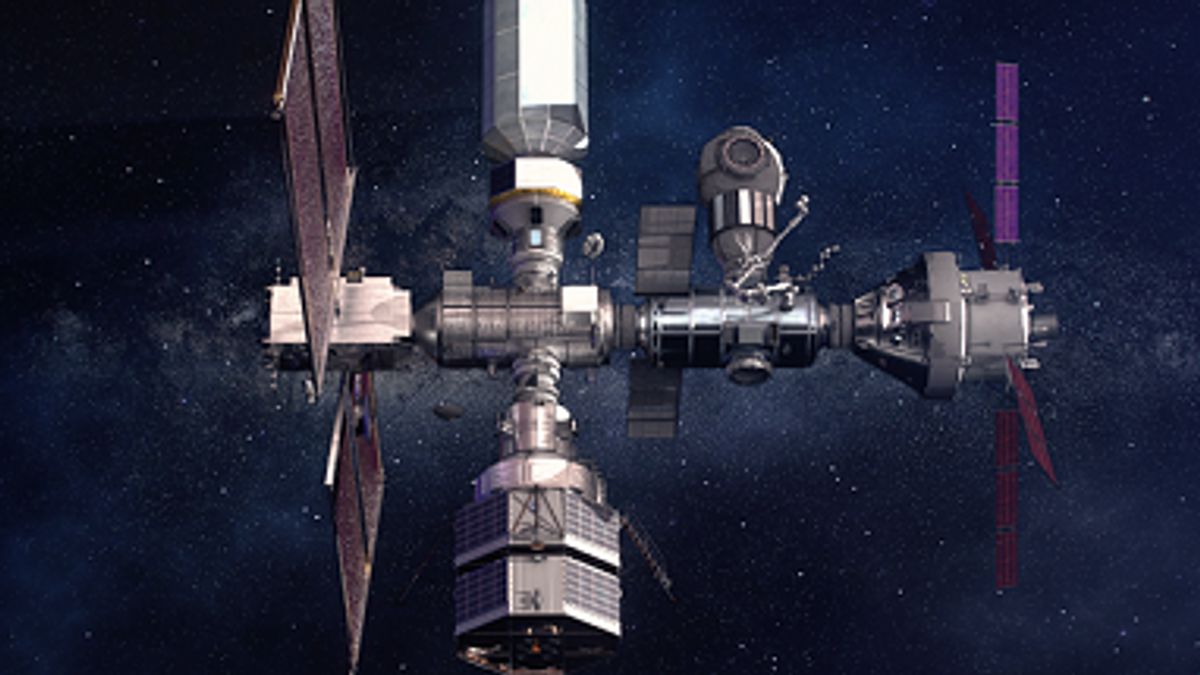JAKARTA - In the coming years, NASA plans to build a station in lunar orbit dubbed Gateway. The station will be used for the residences of astronauts and their research. However, reports say it's not as big as imagined.
An Austrian-based space architect and design researcher at LIQUIFER Space Systems, Renee Waclavicek said Gateway would have a very small size, so astronauts could not stand on it.
NASA and its international partners plan to begin construction of Gateway stations in lunar orbit in the coming years to develop technology and capabilities to support exploration of the Moon and Mars in the years to come.
When completed near the end of the decade, the space lab will measure about a sixth of the size of the International Space Station (ISS), with two residential modules.
Gateway consists of two elements, Power and Propulsion Element (PPE) and Habitation and Logistics Outpost (HALO), which will be launched jointly on commercially purchased launch vehicles.
"International Habitation will have an livable space of about 8 cubic meters and you should share it with three other people," Waclavicek said during a Czech Space Week conference in Brno, Czech Republic on November 30, 2022.
"In other words, it's a room twice twice 2 meters in size. And you'll be locked there. There's another room but they're not bigger and there's not much in number."
Launching Space, Tuesday, January 10, Waclavicek himself was involved in the design stage of the International Habitation module made by Europe, or I-Hab which is one of two elements that are suitable for Gateway. Basically, the bedrooms of the astronauts are combined with the lab room.
Another module, HALO developed by Northrop Grumman in the US. Furthermore, Waclavicek also explained that while working on the design, the architects must comply with the practical demands determined by the nature of the project.
Where their initial hope was to create a larger module similar to that on the ISS, but eventually it had to be abandoned because it was impossible to launch a large component to the Moon.
"We started the first stage with a cylinder with an external dimension similar to what we know from the ISS. The diameter is about 4.5 meters and is 6 meters long. However, due to mass restrictions, we had to shrink it to 3 meters in the outer dimensions. And that left only 1.2 meters by 1.2 meters. 1.2 meters, "explained Waclavicek.
"Most of the internal volume is consumed by the engine, so basically it's just a corridor, where you have to turn 90 degrees if you want to lie down," he added.
Waclavicek added, most modules will be occupied by life support technology that is quite noisy and shaking, a constant buzz that will most likely greatly disrupt the nerves of most ordinary humans.
"Actually, you live in the engine room. Life-supporting systems create noise, they have a lot of fans, and you only have 1.5 cubic meters of private space where you can close doors and tame noise," said Waclavicek.
In addition, architects are also continuing to explore ways to reduce pressure on astronauts and make the experience of staying at Gateway more enjoyable, but they continue to reach technical limits, including an available launch vehicle to send modules to their destination.
The HALO module is scheduled to be launched in early 2024, the I-Hab trip to the Moon is not known for sure but mentioned in 2027. Currently, said Waclawicek, the team is working on a Critical Design Review, an important milestone before hardware creation can begin, and has begun making makets of real size to test human interactions with the habitat environment.
The English, Chinese, Japanese, Arabic, and French versions are automatically generated by the AI. So there may still be inaccuracies in translating, please always see Indonesian as our main language. (system supported by DigitalSiber.id)













